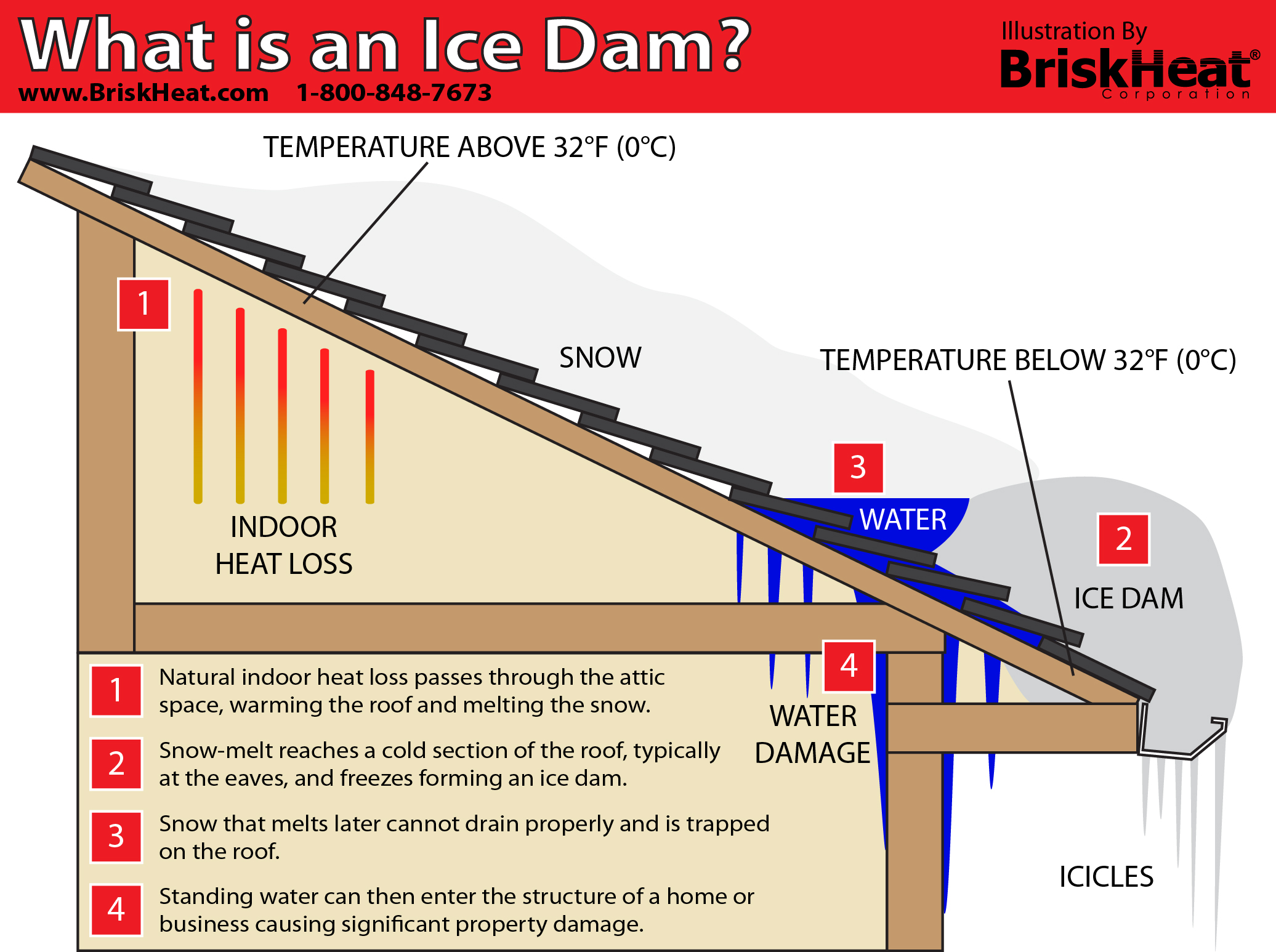

Water damage is the biggest issue that can arise from ice dams. (Although the presence of icicles does not always mean ice dam formations have occurred on your roof.) But on a larger scale, they can often be the indication of ice dams, which can wreak havoc on your roof, gutters, and interior. Icicles, apart from potentially falling on a passerby, only pose a real threat to your home’s gutters. Icicles create less cause for concern than ice dams. When temperatures fluctuate rapidly, it can create the perfect environment for ice dams to form. This is out of your control, but it is important to remain aware of this cause. Rapid Temperature Changes- Ice dams can also form simply due to mother nature’s temperature swings.When their outlets are located on the roof (which most of the time they are), that heat melts the snow and ice, causing the thawing and refreezing process. Chimneys, Dryer Vents, and Plumbing Stacks- These home features release heat.The roof edges, where icicles and ice dams typically form, have no insulation underneath, which causes the refreezing. Without proper insulation, heat will make its way into the attic, causing uneven temperature distribution to the roof. Improper Insulation- Multiple factors can cause the formation of ice dams, but the biggest reason for their appearance is improper attic insulation.When areas of your roof have different degrees of temperature, snowfall will melt in the warmer regions, migrate to the roof’s edge, and refreeze, creating a block of ice or icicle formation. Icicles and ice dams are the result of varying rooftop temperatures. As the ice dam grows, it can block water from being able to properly flow to your gutters, essentially creating a dam on your roof.

Ice dams are a buildup of ice toward the edge of a roof. To form, it requires water to make its way to the edge of your home and freeze as it drips off the side. Ice DamsĪn icicle is a cone-shaped piece of ice that hangs from the eve or gutter of your roof. The bad news, however, is the presence of these formations can mean trouble for your roof if not properly taken care of. The good news is that you as a homeowner only have to worry about icicles and even ice dam formations during freezing temperatures. But whether or not you love the winter months, if you’ve ever wondered if that snow and ice is damaging your roof, John McCarter is here to answer your questions. The blanket of snow that covers the ground is the epitome of what a winter wonderland should look like, especially when that look is accompanied by glistening icicles. Michigan winters can be cold yet beautiful.


 0 kommentar(er)
0 kommentar(er)
